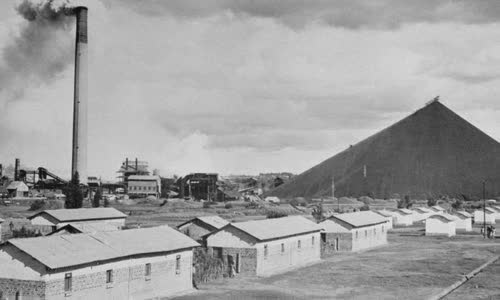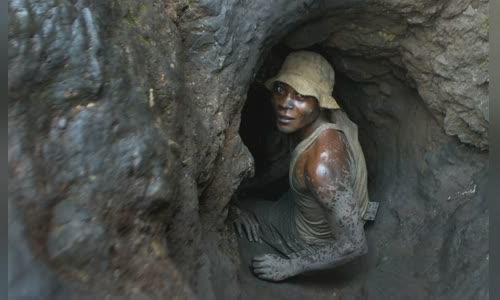The Shinkolobwe uranium mine in Congo provided nearly all of the materials for the Manhattan Project, including two atomic bombs dropped on Japan in 1945.
"The name Shinkolobwe makes me painful and sad," said historian Susan Williams at the Institute for Commonwealth in the UK.

Shinkolobwe mine site in Katanga province, south of Congo, in photo published 1960 Photo: AFP
"When we talk about the atomic bombing of Hiroshima and Nagasaki, we never mention the Shinkolobwe," said Isaiah Mombilo, a Congolese rights activist in South Africa.
The story of the Shinkolobwe dates back to when a rich source of uranium was discovered there in 1915, during the Belgian rule during the Congo.
It was only in 1938, with Otto Hahn discovering a nuclear fission reaction that the potential of uranium became apparent.
In 1942, US military strategists decided to buy as much uranium as they could in pursuit of a plan to develop an atomic bomb called the Manhattan Project.
"The geological structure of the Shinkolobwe is described as a strange place of nature," said Tom Zoellner, an American journalist who visited the Congo mines.
Under the US agreement with Union Miniere, Washington owns 1,200 tons of uranium from the Congo, takes it back to store on Staten Island, and another 3,000 tons of uranium stored at the Shinkolobwe mine.
"Shinkolobwe plays a part in deciding who is the next leader of the world. It all starts from there," said activist Mombilo.
The entire US plan was done in secret, in order not to stir the Axis about the existence of the Manhattan Project.
Secrets about the Shinkolobwe remained hidden for a long time after World War II.
Although a certain amount of uranium is mined in Canada and Colorado, most of the US nuclear material still comes from the Congo.

A man enters a mining pit at the Shinkolobwe mine in 2004 Photo: AP
After World War II, thanks to advanced uranium enrichment techniques, the Western powers became less dependent on these mines.
After the Congo won independence from Belgium in 1960, the Shinkolobwe was closed, pouring concrete to seal the entrance.
According to journalist Zoellner, the West is so upholding the importance of this goal that it is willing to help topple the Congo's first democratically elected government led by Prime Minister Patrice Lumumba, then back Mobutu Sese Seko.
Mobutu was eventually overthrown in 1997. However, the "ghost" of the Shinkolobwe continued to haunt the Congo, as miners began to freely mine in the area looking for copper and cobalt around lost wells.
Therefore, accidents often happen.
Despite the rich mineral reserves at Shinkolobwe, since the withdrawal of Union Miniere in the early 1960s, no safe and efficient mining has been undertaken to benefit people.
To date, many documents about the Shinkolobwe of the US, UK and Belgium are still classified as confidential records, hindering efforts to recognize Congo's contribution to Allied victory, as well as investigating the impact on
"Too many sectors are affected, such as health, politics and economics. We cannot know the negative effects of radiation because of those security activities," said activist Mombilo, only
Many people affected by the Shinkolobwe mine are campaigning for recognition and compensation.
"The Shinkolobwe is a curse to the Congo," Mombilo said.



 Shelly Mae
Shelly Mae







